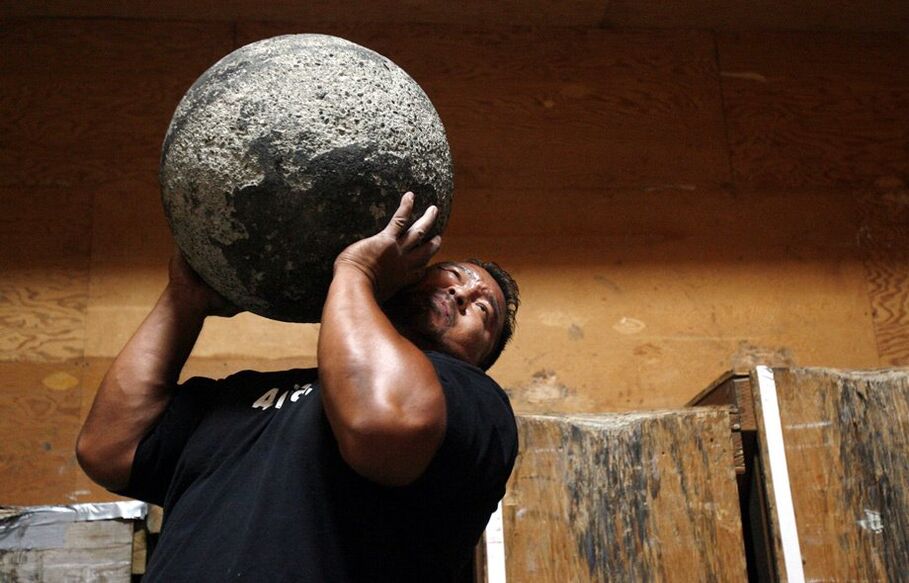Prostatitis and hemorrhoids are the most common diseases in men over 40. Moreover, in some cases, both pathologies can develop in parallel, greatly impairing the quality of human life. Here you need to figure out what these two diseases are and what symptoms are manifested in order to be able to independently recognize the problem and consult a specialist in a timely manner.
What is hemorrhoids: features and symptoms

Hemorrhoids are enlarged veins in the rectum. These veins are called hemorrhoids and form nodules when they expand.
The main cause of the development of the disease is a violation of the outflow of blood from the lower rectum. This is due to various reasons:
- sedentary lifestyle;
- excess weight;
- frequent constipation;
- excessive load;
- inflammation of the rectum.
In other words, blood rushes to the hemorrhoidal area, but its outflow is impaired, so it overflows the veins, which expand. Due to the expansion of the veins, there is a change in the tissue of the corpora cavernosa located under the mucous membrane of the rectum. These sections swell and increase in size, forming the so-called hemorrhoids.
Nodes can be internal or external. External nodes are the result of a weakening of the sphincter muscles, due to which the internal nodes are displaced and fall out of the anus. The number of internal or external formations in the rectum can be different, from one to several nodes. Moreover, the more nodes, the more severe the symptoms of the disease.
Hemorrhoids are most often chronic, with periodic exacerbations.
The disease develops slowly, the symptoms remain invisible for a long time, which explains the main problem of hemorrhoids - late diagnosis. At the initial stage, the symptoms are mild:
- slight edema of the tissues of the lower rectum;
- periodic itching in the anus;
- burning and aching pain after stool.
Symptoms are aggravated with constipation - there is severe pain and stinging when passing feces. At the same time, mucus may be released from the rectum, which further irritates the mucous membrane, increasing the burning sensation.
Pronounced hemorrhoids are manifested by inflammation of the nodes. This is accompanied by excruciating pain. The nodes are damaged during bowel movements, so blood is found in the stool.
Over time, the cavernous bodies of the rectum can be severely deformed, as a result, the nodes fall out, and they have to literally be fixed in the anus with your fingers.
Basic concepts about prostatitis

Prostatitis is an inflammation of the prostate gland. This disease is infectious and non-infectious in nature, can occur in an acute and chronic form.
If we consider simultaneously prostatitis and hemorrhoids, attention should be paid specifically to the non-infectious chronic inflammatory process in the prostate gland. This disease is often called congestive prostatitis.
The essence of the problem lies in the violation of the trophism of the prostate gland. Trophism is understood as blood microcirculation and lymph outflow. Deterioration of these processes leads to the following changes:
- the secret of the prostate gland stagnates;
- the organ swells;
- the secret in the prostate thickens;
- the inflammatory process develops.
The result of a violation of trophism is a swollen and enlarged prostate, which compresses the surrounding tissues and organs (the neck of the bladder, the lower part of the urethra), as a result of which vivid symptoms of prostatitis develop.
The main causes of congestive prostatitis are:
- sedentary lifestyle;
- lack of regular sex;
- excess weight;
- bad habits;
- unbalanced diet.
As a rule, mainly men over 40 years old face this disease.
Doctors often call congestive prostatitis "the disease of the office worker, " thereby emphasizing the connection between the violation of trophism of the prostate and a sedentary lifestyle.
The symptoms of the disease are as follows:
- frequent urge to use the toilet;
- soreness in the perineum, rectum, bladder;
- weakening of the stream of urine when urinating;
- feeling of a constantly full bladder;
- ejaculation disorders;
- deterioration in potency.
Ejaculation disorders are manifested either by rapid ejaculation with short-term stimulation of the penis, or the inability to achieve orgasm during intercourse. The first is associated with an increase in the tone of the prostate, the second - with a violation of the contractility of the organ.
What connects prostatitis and hemorrhoids?

The connection between prostatitis and hemorrhoids is obvious - common causes of development. And in one, and in another case, the disease develops as a result of impaired blood circulation and lymph flow. In this case, prostatitis causes a thickening of juice in the prostate due to a violation of trophism, and hemorrhoids are caused by a violation of the venous outflow of blood from the rectum.
The following reasons lead to such violations:
- sedentary lifestyle (sedentary work);
- lack of regular sex;
- obesity;
- bad habits.
Most modern people work in offices, that is, they spend most of their time sitting. In the conditions of modern life, few people can find enough time for active recreation and sports, and most of the day is spent in a sitting position. The result is poor circulation in the pelvis and lower extremities. If at the same time a man has problems with the veins of the legs, problems with the pelvic organs are only a matter of time. As a rule, varicose veins are also found in the age group of people at risk of developing prostatitis.
It would seem that the lack of regular sex should only affect the prostate, but what does hemorrhoids have to do with it? This is exactly the case when both diseases are associated, and the development of congestive prostatitis entails the expansion of the hemorrhoidal veins. A poor sex life negatively affects the functioning of the prostate gland. As a result, congestion develops and symptoms of prostatitis appear. An enlarged prostate presses on surrounding tissues, including blood vessels, interfering with normal blood flow in that area. As a result, the rate of blood flow to the veins of the rectum changes, venous stasis gradually develops, the veins expand and hemorrhoids are formed. Of course, this process stretches for many years, but if nothing is done, prostatitis will eventually result in hemorrhoids.
The same thing happens with obesity. The trophism of the pelvic organs is violated, and then either prostatitis or hemorrhoids develops. If the man did not react in any way to the presence of one of these diseases, the development of the second should be expected over time.
The negative impact of bad habits should be considered separately. The most common addictions are smoking and alcohol abuse. Nicotine has a negative effect on blood vessels, increasing their tone. As a result, they narrow, which negatively affects the blood flow rate. Another factor is the disruption of oxygen transport to tissues during prolonged smoking. The result again becomes poor circulation in the pelvic organs and lower extremities, which leads to congestion, prostatitis or hemorrhoids.
Alcohol abuse negatively affects the functioning of the nervous and cardiovascular systems. An increase in blood pressure is often noted, which is the cause of impaired blood flow. Thus, smoking and systematic consumption of alcohol is a direct path to the development of prostatitis and hemorrhoids.
As a rule, one of these diseases develops under the influence of several factors at once. Over time, congestion spreads to all organs of the pelvis, causing the development of a second disease.
Having figured out whether hemorrhoids are associated with prostatitis, you should know that both diseases can develop in parallel. The presence of two such diagnoses complicates treatment, so you should see a doctor immediately.
Treatment of hemorrhoids and prostatitis
If both diseases have worsened, they will have to be treated at the same time. In general, the treatment of these two diseases overlaps somewhat, so taking drugs will be able to stop the exacerbation.
In the treatment of prostatitis, tablets and rectal suppositories are used. For the treatment of hemorrhoids, rectal suppositories are also used, therapy is supplemented with microclysters.
Suppositories
Preference is given to mild anti-inflammatory drugs. They simultaneously stop inflammation in the prostate and reduce the manifestations of hemorrhoids.
Additionally, methyluracil suppositories can be recommended to improve local metabolic processes and strengthen immunity. Suppositories with ichthyol in the composition are often prescribed as an anti-inflammatory agent.
Microclysters to relieve inflammation
Microclysters are used both to stop the inflammatory reaction and as a bowel preparation before the administration of rectal suppositories. At home, enemas are made with decoctions of anti-inflammatory herbs - chamomile, St. John's wort, calendula.
Physiotherapy and exercise therapy
Physiotherapy is prescribed only after the relief of acute symptoms. It aims to improve blood circulation in the pelvic organs and can reduce the frequency of exacerbations. In the treatment of prostatitis, electrostimulation, magnetotherapy, and laser therapy are used.
Since the access to the prostate is carried out through the rectum, such procedures have a positive effect on the health of the anus.
Exercise therapy is prescribed to all men who are faced with stagnant processes in the pelvic organs. Exercise stimulates local circulation and lymph drainage. They can be performed in the clinic or at home. Additionally, it is useful for men to go in for sports, swimming, yoga, running at a moderate pace are shown.
Prostate massage for hemorrhoids
Prostate massage is the best remedy for the treatment of congestive prostatitis, which is strictly contraindicated for inflammation of the hemorrhoid against a background of exacerbation of hemorrhoids. The course of procedures will have to be postponed until the inflammation in the nodes is stopped. Otherwise, during the massage, the hemorrhoid can be damaged, which leads to profuse bleeding and can cause the spread of the inflammatory process or even infection of the site.
Preventive measures

Prevention of hemorrhoids and prostatitis is aimed at increasing the period of remission and reducing the frequency of exacerbations. Preventive measures:
- balanced diet;
- prevention of constipation;
- strengthening the immune system;
- playing sports;
- regular sex life;
- rejection of bad habits.
It is important to structure the diet in such a way as to avoid the development of constipation. Constipation is one of the main factors in the exacerbation of hemorrhoids and prostatitis, as it impairs blood circulation. During bowel movements, hard feces injure the rectum and hemorrhoids, causing an exacerbation, and irritate the prostate, which is hidden by a thin septum. To prevent constipation, your doctor may also recommend special medications, such as glycerin suppositories.























